[OAU, Ife] MTH 104: Vectors
18
Learning Track Courses
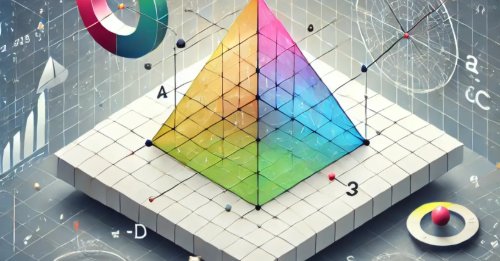 Vector Algebra and Foundational Geometry - Vectors (Undergraduate Foundation)This course provides a comprehensive, first-principles guide to vector analysis. We begin with the essential definitions, distinguishing between scalars, vectors, and various vector types. You will then master the core rules of vector algebra—including the triangle and parallelogram laws of addition and scalar multiplication—before applying them to prove geometric properties of polygons. The curriculum progresses logically through key concepts such as position vectors, resolving vectors into Cartesian components, the division of lines, vector projections, and the calculation of centroids.
The true power of vectors lies in their ability to connect abstract algebra to tangible geometry. This course is built around that connection, with a heavy emphasis on practical application. Through dozens of meticulously worked examples, you will move beyond theory and develop a deep, intuitive understanding of how to represent and solve complex geometric problems, building the confidence and skill needed for more advanced study.
This programme is designed for students in late secondary school (such as A-Level or IB) and first-year university students in physics, engineering, mathematics, and computer science. It is the perfect starting point for anyone new to the subject and an invaluable refresher for those who need to solidify their foundational knowledge before tackling more advanced topics like linear algebra or vector calculus.
Vector Algebra and Foundational Geometry - Vectors (Undergraduate Foundation)This course provides a comprehensive, first-principles guide to vector analysis. We begin with the essential definitions, distinguishing between scalars, vectors, and various vector types. You will then master the core rules of vector algebra—including the triangle and parallelogram laws of addition and scalar multiplication—before applying them to prove geometric properties of polygons. The curriculum progresses logically through key concepts such as position vectors, resolving vectors into Cartesian components, the division of lines, vector projections, and the calculation of centroids.
The true power of vectors lies in their ability to connect abstract algebra to tangible geometry. This course is built around that connection, with a heavy emphasis on practical application. Through dozens of meticulously worked examples, you will move beyond theory and develop a deep, intuitive understanding of how to represent and solve complex geometric problems, building the confidence and skill needed for more advanced study.
This programme is designed for students in late secondary school (such as A-Level or IB) and first-year university students in physics, engineering, mathematics, and computer science. It is the perfect starting point for anyone new to the subject and an invaluable refresher for those who need to solidify their foundational knowledge before tackling more advanced topics like linear algebra or vector calculus.
This course provides a comprehensive, first-principles guide to vector analysis. We begin with the essential definitions, distinguishing between scalars, vectors, and various vector types. You will then master the core rules of vector algebra—including the triangle and parallelogram laws of addition and scalar multiplication—before applying them to prove geometric properties of polygons. The curriculum progresses logically through key concepts such as position vectors, resolving vectors into Cartesian components, the division of lines, vector projections, and the calculation of centroids. The true power of vectors lies in their ability to connect abstract algebra to tangible geometry. This course is built around that connection, with a heavy emphasis on practical application. Through dozens of meticulously worked examples, you will move beyond theory and develop a deep, intuitive understanding of how to represent and solve complex geometric problems, building the confidence and skill needed for more advanced study. This programme is designed for students in late secondary school (such as A-Level or IB) and first-year university students in physics, engineering, mathematics, and computer science. It is the perfect starting point for anyone new to the subject and an invaluable refresher for those who need to solidify their foundational knowledge before tackling more advanced topics like linear algebra or vector calculus.
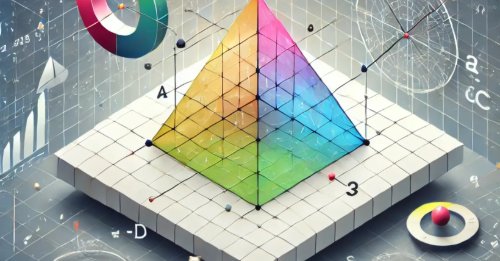 Scalar, Vector and Triple Products of Vectors (Undergraduate Foundation)This course delves into the essential topic of vector multiplication. We systematically explore the four main types of vector products, beginning with the scalar (dot) and vector (cross) products of two vectors. You will then advance to products involving three vectors: the scalar triple product and the vector triple product, uncovering their unique properties and applications.
Vector products are the key to unlocking the geometric power of vector analysis. They provide the tools to calculate angles, projections, areas, and volumes with elegant algebraic formulas. This course focuses on revealing these deep connections, showing how abstract multiplication rules translate into powerful methods for solving real-world problems in physics and engineering.
This is an intermediate course designed for students who have a solid grasp of foundational vector algebra and components. It is the perfect next step for students in A-Level or university STEM programmes looking to deepen their understanding of vector analysis. A strong foundation in the topics from our introductory course is highly recommended for success.
Scalar, Vector and Triple Products of Vectors (Undergraduate Foundation)This course delves into the essential topic of vector multiplication. We systematically explore the four main types of vector products, beginning with the scalar (dot) and vector (cross) products of two vectors. You will then advance to products involving three vectors: the scalar triple product and the vector triple product, uncovering their unique properties and applications.
Vector products are the key to unlocking the geometric power of vector analysis. They provide the tools to calculate angles, projections, areas, and volumes with elegant algebraic formulas. This course focuses on revealing these deep connections, showing how abstract multiplication rules translate into powerful methods for solving real-world problems in physics and engineering.
This is an intermediate course designed for students who have a solid grasp of foundational vector algebra and components. It is the perfect next step for students in A-Level or university STEM programmes looking to deepen their understanding of vector analysis. A strong foundation in the topics from our introductory course is highly recommended for success.
This course delves into the essential topic of vector multiplication. We systematically explore the four main types of vector products, beginning with the scalar (dot) and vector (cross) products of two vectors. You will then advance to products involving three vectors: the scalar triple product and the vector triple product, uncovering their unique properties and applications. Vector products are the key to unlocking the geometric power of vector analysis. They provide the tools to calculate angles, projections, areas, and volumes with elegant algebraic formulas. This course focuses on revealing these deep connections, showing how abstract multiplication rules translate into powerful methods for solving real-world problems in physics and engineering. This is an intermediate course designed for students who have a solid grasp of foundational vector algebra and components. It is the perfect next step for students in A-Level or university STEM programmes looking to deepen their understanding of vector analysis. A strong foundation in the topics from our introductory course is highly recommended for success.
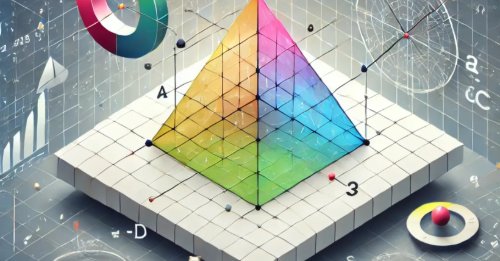 Vector Equations of Lines, Planes, and Conics - Vectors (Undergraduate Foundation)This course explores a crucial application of vector analysis: describing and solving problems in geometry. We begin by mastering the techniques for solving abstract vector equations before applying these skills to define geometric shapes. You will learn to construct the vector equations for lines, planes, and the conic sections (circles, ellipses, parabolas, and hyperbolas) in both two and three dimensions.
The ability to describe complex geometries with concise equations is a cornerstone of modern science and engineering. This course bridges the gap between abstract vector theory and its practical application in modeling the real world. By working through a vast library of examples, you will learn to analyze the relationships between shapes—calculating intersections, angles, and distances—with precision and confidence.
This advanced course is designed for students ready to apply their knowledge of vector products to analytical geometry. A thorough understanding of vector algebra, dot products, and cross products is essential. This programme is the critical bridge to higher-level topics, making it ideal for university students preparing for courses in vector calculus or mechanics.
Vector Equations of Lines, Planes, and Conics - Vectors (Undergraduate Foundation)This course explores a crucial application of vector analysis: describing and solving problems in geometry. We begin by mastering the techniques for solving abstract vector equations before applying these skills to define geometric shapes. You will learn to construct the vector equations for lines, planes, and the conic sections (circles, ellipses, parabolas, and hyperbolas) in both two and three dimensions.
The ability to describe complex geometries with concise equations is a cornerstone of modern science and engineering. This course bridges the gap between abstract vector theory and its practical application in modeling the real world. By working through a vast library of examples, you will learn to analyze the relationships between shapes—calculating intersections, angles, and distances—with precision and confidence.
This advanced course is designed for students ready to apply their knowledge of vector products to analytical geometry. A thorough understanding of vector algebra, dot products, and cross products is essential. This programme is the critical bridge to higher-level topics, making it ideal for university students preparing for courses in vector calculus or mechanics.
This course explores a crucial application of vector analysis: describing and solving problems in geometry. We begin by mastering the techniques for solving abstract vector equations before applying these skills to define geometric shapes. You will learn to construct the vector equations for lines, planes, and the conic sections (circles, ellipses, parabolas, and hyperbolas) in both two and three dimensions. The ability to describe complex geometries with concise equations is a cornerstone of modern science and engineering. This course bridges the gap between abstract vector theory and its practical application in modeling the real world. By working through a vast library of examples, you will learn to analyze the relationships between shapes—calculating intersections, angles, and distances—with precision and confidence. This advanced course is designed for students ready to apply their knowledge of vector products to analytical geometry. A thorough understanding of vector algebra, dot products, and cross products is essential. This programme is the critical bridge to higher-level topics, making it ideal for university students preparing for courses in vector calculus or mechanics.
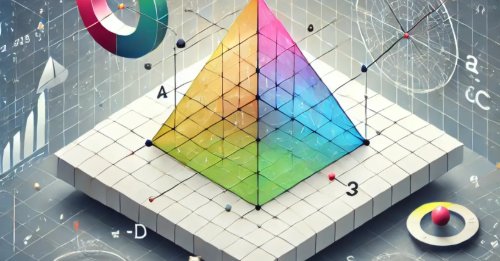 Differentiation and Integration of Vector-Valued Functions - Vectors (Undergraduate Foundation)This course provides a foundational introduction to vector calculus, focusing on vector-valued functions of a single variable. You will master the rules for differentiating and integrating vectors, and learn how these operations relate to the geometry of parametric curves. The curriculum is built to give you a solid understanding of the mathematical tools that describe change in multiple dimensions.
How do we precisely describe the motion of a satellite or a particle moving along a curved path? This course answers that question by bridging the gap between abstract calculus and the real-world physics of motion. You'll learn how the elegant tools of vector differentiation and integration allow us to model velocity, acceleration, and trajectories, providing the essential language for kinematics.
This course is the essential next step for students who have a firm grasp of vector algebra and products. It is specifically designed for first-year university students in STEM fields who need to understand the calculus of vectors before tackling more advanced courses. This programme provides the critical foundation for future studies in vector mechanics, differential geometry, and the calculus of vector fields.
Differentiation and Integration of Vector-Valued Functions - Vectors (Undergraduate Foundation)This course provides a foundational introduction to vector calculus, focusing on vector-valued functions of a single variable. You will master the rules for differentiating and integrating vectors, and learn how these operations relate to the geometry of parametric curves. The curriculum is built to give you a solid understanding of the mathematical tools that describe change in multiple dimensions.
How do we precisely describe the motion of a satellite or a particle moving along a curved path? This course answers that question by bridging the gap between abstract calculus and the real-world physics of motion. You'll learn how the elegant tools of vector differentiation and integration allow us to model velocity, acceleration, and trajectories, providing the essential language for kinematics.
This course is the essential next step for students who have a firm grasp of vector algebra and products. It is specifically designed for first-year university students in STEM fields who need to understand the calculus of vectors before tackling more advanced courses. This programme provides the critical foundation for future studies in vector mechanics, differential geometry, and the calculus of vector fields.
This course provides a foundational introduction to vector calculus, focusing on vector-valued functions of a single variable. You will master the rules for differentiating and integrating vectors, and learn how these operations relate to the geometry of parametric curves. The curriculum is built to give you a solid understanding of the mathematical tools that describe change in multiple dimensions. How do we precisely describe the motion of a satellite or a particle moving along a curved path? This course answers that question by bridging the gap between abstract calculus and the real-world physics of motion. You'll learn how the elegant tools of vector differentiation and integration allow us to model velocity, acceleration, and trajectories, providing the essential language for kinematics. This course is the essential next step for students who have a firm grasp of vector algebra and products. It is specifically designed for first-year university students in STEM fields who need to understand the calculus of vectors before tackling more advanced courses. This programme provides the critical foundation for future studies in vector mechanics, differential geometry, and the calculus of vector fields.
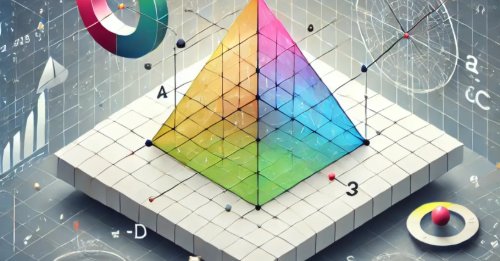 Introduction to Vector Mechanics - Vectors (Undergraduate Foundation)This course provides a rigorous introduction to classical mechanics using the language of vectors. We cover the two main branches of the subject: dynamics, where you will analyze forces, equilibrium, work, energy, and moments; and kinematics, where you will describe the motion of particles using position, velocity, and acceleration. You will learn to analyze a wide range of scenarios, including projectile and circular motion.
Mechanics is the science of how things move and interact, forming the foundation of all physical sciences and engineering. This course is designed to build your problem-solving intuition by applying vector principles to tangible, real-world scenarios. You will learn to model physical systems mathematically, providing a powerful framework for understanding the world around you.
This programme is designed for students who have completed our introductory course on vector calculus. It is the ideal next step for first-year university students in physics, engineering, and other physical sciences. This course provides the essential foundation required before tackling more comprehensive topics in the main Engineering Mechanics learning track.
Introduction to Vector Mechanics - Vectors (Undergraduate Foundation)This course provides a rigorous introduction to classical mechanics using the language of vectors. We cover the two main branches of the subject: dynamics, where you will analyze forces, equilibrium, work, energy, and moments; and kinematics, where you will describe the motion of particles using position, velocity, and acceleration. You will learn to analyze a wide range of scenarios, including projectile and circular motion.
Mechanics is the science of how things move and interact, forming the foundation of all physical sciences and engineering. This course is designed to build your problem-solving intuition by applying vector principles to tangible, real-world scenarios. You will learn to model physical systems mathematically, providing a powerful framework for understanding the world around you.
This programme is designed for students who have completed our introductory course on vector calculus. It is the ideal next step for first-year university students in physics, engineering, and other physical sciences. This course provides the essential foundation required before tackling more comprehensive topics in the main Engineering Mechanics learning track.
This course provides a rigorous introduction to classical mechanics using the language of vectors. We cover the two main branches of the subject: dynamics, where you will analyze forces, equilibrium, work, energy, and moments; and kinematics, where you will describe the motion of particles using position, velocity, and acceleration. You will learn to analyze a wide range of scenarios, including projectile and circular motion. Mechanics is the science of how things move and interact, forming the foundation of all physical sciences and engineering. This course is designed to build your problem-solving intuition by applying vector principles to tangible, real-world scenarios. You will learn to model physical systems mathematically, providing a powerful framework for understanding the world around you. This programme is designed for students who have completed our introductory course on vector calculus. It is the ideal next step for first-year university students in physics, engineering, and other physical sciences. This course provides the essential foundation required before tackling more comprehensive topics in the main Engineering Mechanics learning track.
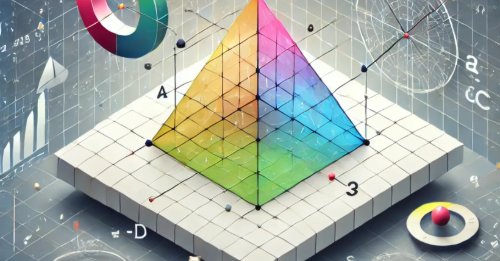 Introduction to Differential Geometry - Vectors (Undergraduate Foundation)This course provides a rigorous introduction to the differential geometry of curves in three-dimensional space. Using the tools of vector calculus, you will learn to analyze the intrinsic properties of a curve at any point. We will explore key concepts such as arc length, curvature, and torsion, and define the moving T-N-B frame (tangent, normal, and binormal vectors) using the celebrated Frenet-Serret formulas.
How can we mathematically describe the precise twisting and turning of a curve in space? Differential geometry provides the elegant and powerful answer. This field is not just abstract; its principles are fundamental to understanding the shape of DNA, designing paths for robotics, and creating realistic motion in computer graphics. This course reveals the beautiful mathematics behind the shapes that define our world.
This programme is designed for students who have completed our introductory course on vector calculus and wish to explore a beautiful application of its principles. It is ideal for students of mathematics, physics, and computer science with an interest in geometry and abstract structures. This course will sharpen your analytical skills and provide a solid foundation for more advanced studies in geometry and topology.
Introduction to Differential Geometry - Vectors (Undergraduate Foundation)This course provides a rigorous introduction to the differential geometry of curves in three-dimensional space. Using the tools of vector calculus, you will learn to analyze the intrinsic properties of a curve at any point. We will explore key concepts such as arc length, curvature, and torsion, and define the moving T-N-B frame (tangent, normal, and binormal vectors) using the celebrated Frenet-Serret formulas.
How can we mathematically describe the precise twisting and turning of a curve in space? Differential geometry provides the elegant and powerful answer. This field is not just abstract; its principles are fundamental to understanding the shape of DNA, designing paths for robotics, and creating realistic motion in computer graphics. This course reveals the beautiful mathematics behind the shapes that define our world.
This programme is designed for students who have completed our introductory course on vector calculus and wish to explore a beautiful application of its principles. It is ideal for students of mathematics, physics, and computer science with an interest in geometry and abstract structures. This course will sharpen your analytical skills and provide a solid foundation for more advanced studies in geometry and topology.
This course provides a rigorous introduction to the differential geometry of curves in three-dimensional space. Using the tools of vector calculus, you will learn to analyze the intrinsic properties of a curve at any point. We will explore key concepts such as arc length, curvature, and torsion, and define the moving T-N-B frame (tangent, normal, and binormal vectors) using the celebrated Frenet-Serret formulas. How can we mathematically describe the precise twisting and turning of a curve in space? Differential geometry provides the elegant and powerful answer. This field is not just abstract; its principles are fundamental to understanding the shape of DNA, designing paths for robotics, and creating realistic motion in computer graphics. This course reveals the beautiful mathematics behind the shapes that define our world. This programme is designed for students who have completed our introductory course on vector calculus and wish to explore a beautiful application of its principles. It is ideal for students of mathematics, physics, and computer science with an interest in geometry and abstract structures. This course will sharpen your analytical skills and provide a solid foundation for more advanced studies in geometry and topology.